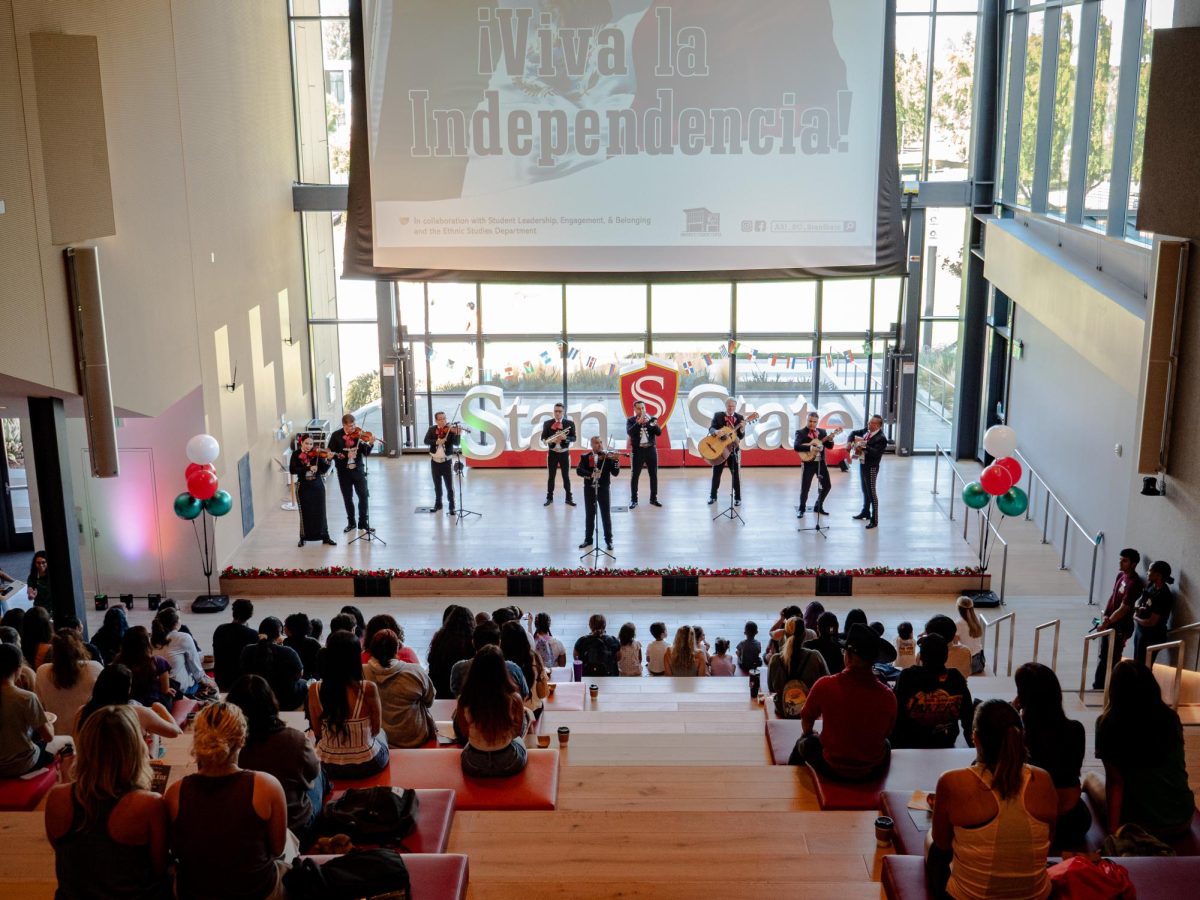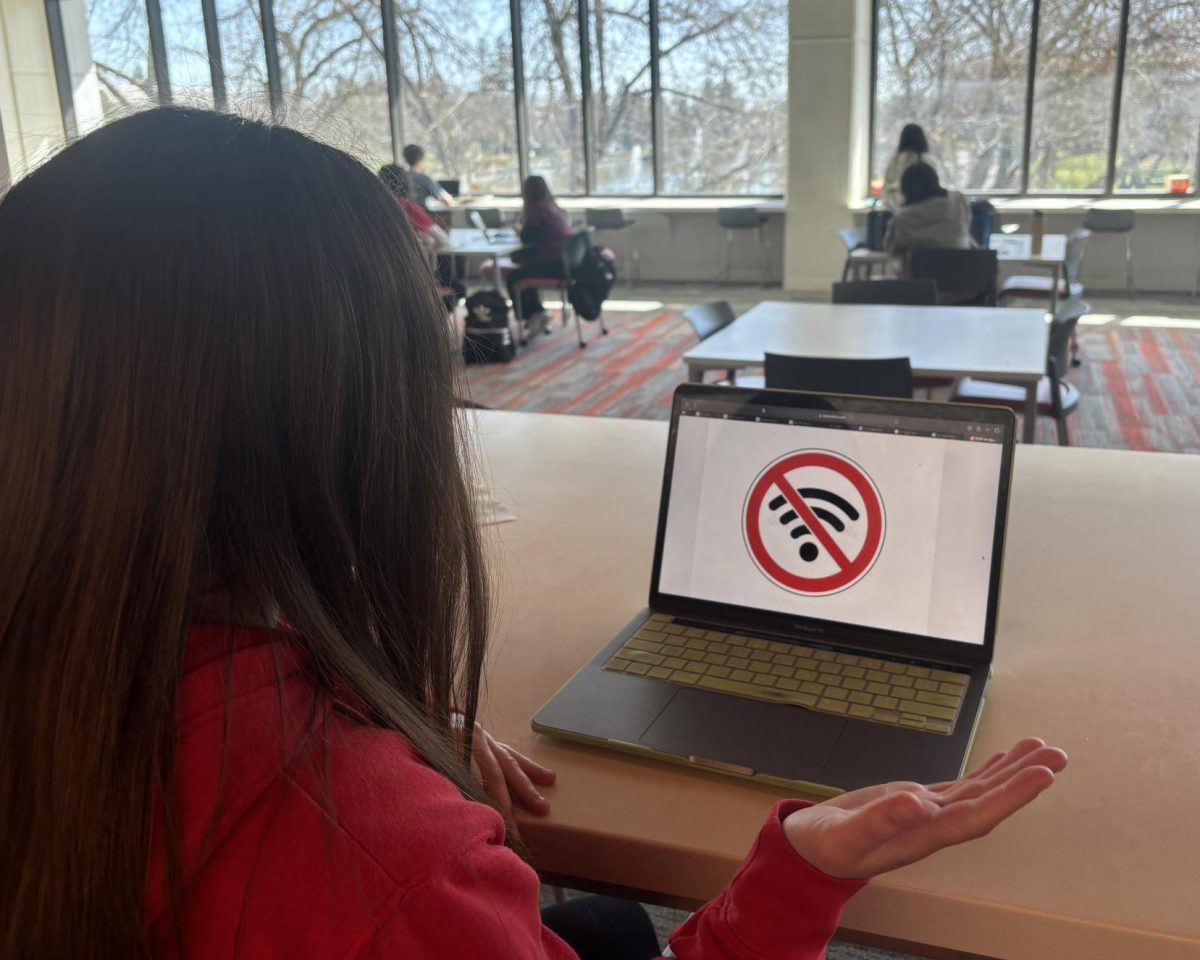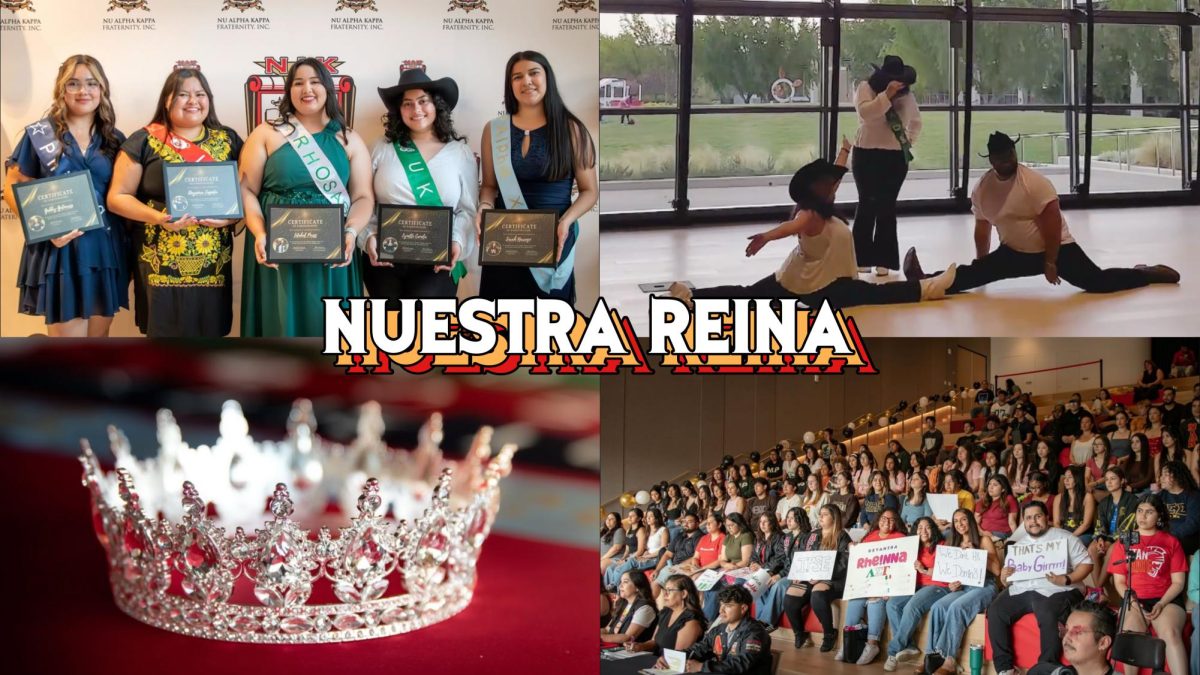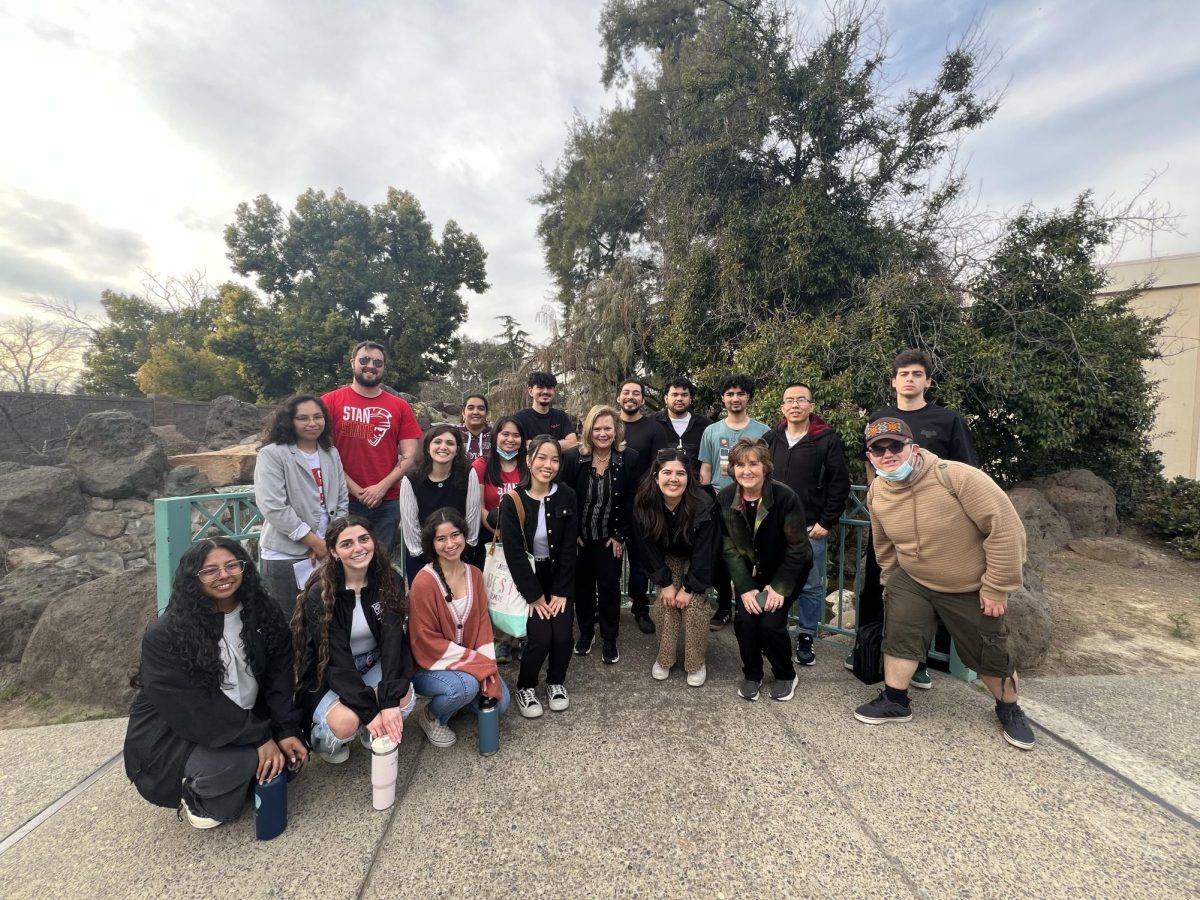For those of you who are still thinking about what classes you should take fall semester, JOUR 3112, a.k.a. “Radio Production Laboratory” is one option you can take. Greg Jacquay, KCSS general manager and lecturer for this course, encourages all students to join.
The radio production lab comprises of two courses that students can take throughout the academic year.
“So the first semester, they’re doing a weekly music show, so they’re playing music for either two to three hours and then they’re going on the air three or four times an hour and talking about the music,” Jacquay said about his class.
In the first semester, there is a combination of lecture and a hands-on experience with the KCSS radio station. For the lecture portion of the class, students meet once a week and learn about radio history and FCC rules and regulations as well as comparing commercial versus non-commercial radio, researching different radio styles, and talking about podcasting, webcasting and satellite radio.
The students also perform a weekly radio show. They are trained so that they can fully run the show on their own, learn all of the equipment and learn what they can and cannot say while on the air.
While on the air, students are recorded and then receive feedback that are called SCOPE sessions, in which the recordings are played back and a discussion is held about what one should or should not be saying online. These sessions also provide advice on how to communicate over radio compared to television or other kinds of media.
According to Jacquay, the class spends time going over the music and listening to several sets. He has the students put together three or four songs that have a common theme, and the students discuss that theme to the audience.
In the second semester, students go into the production labs.
“We have a broadcast studio and a production studio, which we also call a production lab. In there, the second semester students produce public service announcements, produce station IDs…And as the semester goes on, they start doing longer-form recordings,” Jacquay said.
The longer-form recordings consist of song lyrics, poetry or a little bit of prose, which students recite on the air.
About halfway through the semester, the students start producing podcasts. The students are required to produce three ten-to-fifteen-minute podcasts. They do not have to have a theme, but some students choose to do it that way.
“We have some [students] that wanna do a podcast and talk about shoes. We have a guy…who’s doing his on Pokémon. So they pick a topic that they know a lot about or wanna know a lot about, and they put together a podcast,” Jacquay said.
“It’s not just them talking; they incorporate sound effects, they incorporate music in the background, they do sound bites, they have interviews, sometimes we’ll have a roundtable discussion…”
Hilda Toribio Flores (senior, Communication Studies) is the production director at KCSS. Last semester, she was the music director with a focus on FAT Jazz, Blues & Reggae for KCSS, but she started out in the radio production class.
“I think like two years ago, I wanted to take a journalism class, but I didn’t know which one. And so I flipped a coin to see if it would be radio or The Signal. It came up with radio…At first it was really intimidating. I was like, ‘Huh, I’m gonna be on air? Oh my god, this Greg guy’s so scary. Oh my god,’” Flores said, laughing.
“But like, I loved it. It was so much fun!”
Alondra De La Cruz (senior, Communication Studies) was the music director at KCSS at the time and taught Flores everything she knew. When new positions opened up, De La Cruz encouraged Flores to apply. De La Cruz ended up receiving the position of station manager while Flores took De La Cruz’s spot as music director.
Flores says that she enjoyed her job as a music director.
“They [bands] send us albums. Our job is to get music and decide if it’s good or not and decide if it’s clean. If we decide that it’s good, then we put it into the rotation. That just means that we put it into the station so that people can play it, and then if people are playing it and it’s really good, then we put it into our inventory,” Flores explained.
Flores also does charting, which is keeping track of what music does well and what doesn’t on an Excel spreadsheet.
“My favorite part of working here is when you get a broadcaster who’s like, ‘What’s that? I don’t know that.’ And then they start playing it, and they’re like, ‘This is really good. Oh my gosh.’…It’s for them to discover a new type of music that they love that’s going to stay with them is kind of cool,” Flores said.
“Also, just like my co-workers here have been awesome. The people who get hired care about the station as much as you do, so it’s really nice to have this to bond over. We’re all really close, we’re all really good friends, not just co-workers.”
A good friend and former co-worker of Flores is Mariah Esparza, who is now an alumna of California State University, Stanislaus (Stan State). Esparza worked in KCSS as the productions director and played Mod Rock, EDM & Loud Rock on KCSS.
“Promotions is stressful because you’re juggling a lot of different things at once. You’re in charge of all the social media, and also planning different events and then ordering merchandise. So event planning is really awesome once it’s done, but when you’re doing it, it’s stressful because there are a lot of different components,” Esparza explained.
Esparza agrees with Flores about the radio station feeling like a close-knit community.
“I’m in the station a lot. I’m in here when I don’t have to be here, which is all the time. I’m pretty sure a lot of us are ‘cause it’s a really nice atmosphere, and we have our own offices, and it’s just a really nice place to be and do homework and also do work,” Esparza said.
KCSS also has close ties with The Signal.
“We do some cross promotions with The Signal. We’re trying to converge and do a little bit more with each other. We’re trying to put some more news on the radio, and we’re trying to put some more radio in the news,” Jacquay said.
Dr. Shannon Stevens, professor for the Communications Department and advisor for The Signal, describes media convergence as “using the best possible way to tell a story for different kinds of listeners and viewers and readers. What we call convergence now in the media world is stuff that y’all take for granted such as photographs with a story…”
“You can also use social media, you can use video, you can use radio, you can use podcasts, so visual, oral, auditory. The more ways that you tell a story and the more ways that you combine those stories, the stronger your convergence is.”
Both Dr. Stevens and Jacquay described Flores’ podcast, ‘Ask the Reporter,’ as a good example of media convergence because it is a combination of KCSS and The Signal.
“She [Flores] takes the stories that The Signal reporters and editors have done, and she brings them into KCSS and interviews them and talks to them about what went into the story, why they did the story, what it was like talking to people about it, what the writing process was like, all that kind of fun stuff,” Dr. Stevens said. “And that’s a podcast I’m particularly excited about because…if you go into the field of journalism, it’s something that you’re actually going to have to do.”
Sometimes, Flores will also insert sound clips of reporters in the field into her podcasts.
“I used audio from this girl that I interviewed at the Solidarity Rally, and you could hear people cheering in the background. And I thought that was really cool, like to have an ambience of that,” Flores said.
She also said that the podcast looks great on a resume.
“I think it really helps with my portfolio. I can be like, ‘Look what I’ve done! I did this by myself! Look! This is my idea!’ I feel like I have something to show people. I’ve worked hard for something.”
Esparza also took advantage of media convergence when she received a SERSCA grant of one thousand dollars to be a producer of the Central Valley Politics podcast.
“Basically, my job was to listen to everything before we put it up and make sure that it was all put together before we promote it and put it on our social media sites and send it to news outlets so that maybe we can get linked and make sure that people know about it,” Esparza explained. “And then the other part of it is doing research and trying to find out the best way that candidates, especially on down-ballot local elections, can communicate with potential voters, and what works and what doesn’t.”
Rankin gave some advice to students who are thinking about joining the team at KCSS.
“If you’d like to work for KCSS, you are in the class probably. I would say take more out of it than just the broadcasting tips, and try and think about what you can apply to other things in your life besides just radio ‘cause there’s actually quite a bit of things you could learn here that apply to other things besides broadcasting.”
Jacquay’s advice is: “Sign up! And have an open mind, and be ready to go on the air…We have broadcasters that are on the air live doing live broadcasting in the middle of the day at primetime hours. They’re trained within three weeks, so they’re doing shows on their own by that point. Sometimes I have students that that’s too much for them. They think that we’re just gonna talk about radio and it’s just gonna be kind of a theory thing or we’re gonna practice a little bit, but here we’re actually on the air, engaged on a 6,000-watt FM radio station that broadcasts 50 miles and can reach over a million people just over the air.”
Despite the fear that some might have about immediately being on the air, Dr. Stevens sends a reassuring message.
“In Journalism 3012 and Journalism 3112, you learn important PR skills, important recording skills, you become a better critical thinker when it comes to media, and it’s also really fun to get plugged into your campus community in these different ways. You know, it’s a one-up.”
You can listen to the KCSS radio here. The podcasts are also located on the KCSS and The Signal websites as well as Soundcloud.
Categories:
KCSS calls you to be a part of the radio team
Tatiana Olivera
•
May 16, 2017
Mariah Esparza (left) and Hilda Toribio Flores (right) in the KCSS office. (Signal Photo/Tatiana Olivera)
0
Donate to Signal
Your donation will support the student journalists of California State University, Stanislaus. Your contribution will allow us to purchase equipment and cover our annual website hosting costs.
More to Discover







